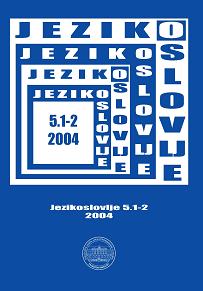On the analysability of English exocentric compounds
On the analysability of English exocentric compounds
Author(s): Réka BenczesSubject(s): Language and Literature Studies
Published by: Filozofski fakultet, Sveučilište Josipa Jurja Strossmayera, Osijek
Keywords: analysability; blending; compositionality; compounds; creativity; endocentric; exocentric; profile determinacy
Summary/Abstract: In the past two decades, numerous studies have been written on the successful ap-plication of metaphor, metonymy and blending in the analysis of idiomatic ex-pressions which traditional linguistic literature treated as semantically unanalysable phenomena, that go against the theory of compositionality (on the non-analysability of idioms see for example Allen 1986, Cruse 1991, Fraser 1970; on the analysability of idioms see for example Benczes 2002, Gibbs 1994, Lakoff 1987, Kövecses and Szabó 1996). A similar view was adopted for the so-called exocentric compound expressions (for the original definition of endo- and exocen-tricity see Bloomfield 1933) . Since the vast majority of English compounds is endocentric (Bloomfield 1933), linguistic literature has a tendency to mention exocentric combinations only peripherally (if they are mentioned at all), and views these constructions as semantically non-transparent (see for example Dirven and Verspoor 1998, Jespersen 1954, Katamba 1993, Levi 1978, Marchand 1960, Sel-kirk 1982, Spencer 1991). The present paper takes a close look at these much-ignored constructions and claims that the semantic relations that might hold between the modifier and head elements of such compounds are exactly the same as those that exist between the modifier and the head of endocentric compounds (e.g. part–whole; source–result, time–object, etc.). Moreover, “exocentric” or “non-transparent” compounds are just as easily analysable as endocentric ones. With the help of cognitive linguistic “tools” such as metaphor, metonymy and blending among others, their meaning becomes analysable and transparent. Thus there is no need for the traditional distinction between the two categories of se-mantically endocentric and exocentric compounds: all we are dealing with is a more imaginative word formation process. Therefore I suggest using the term “creative compound” for metaphorical (and/or metonymical) noun–noun combi-nations.
Journal: Jezikoslovlje
- Issue Year: V/2004
- Issue No: 1+2
- Page Range: 1-21
- Page Count: 21
- Language: English

